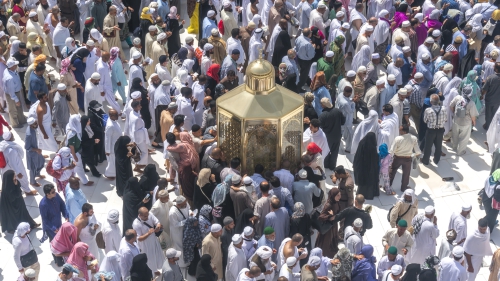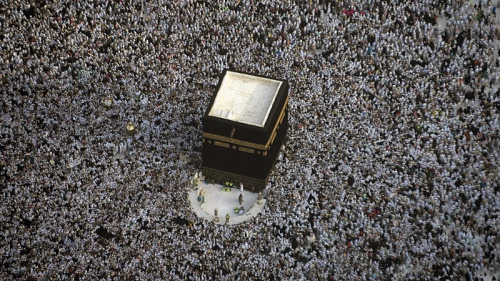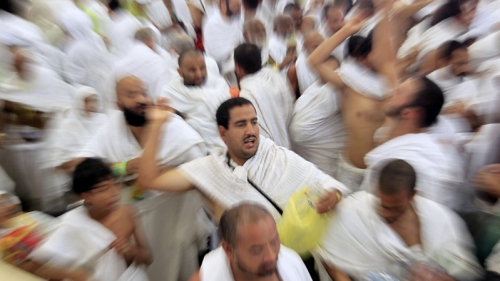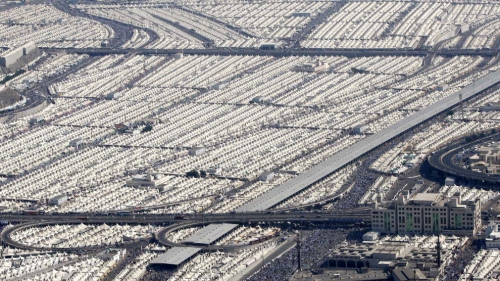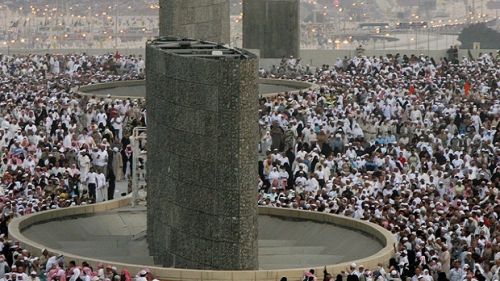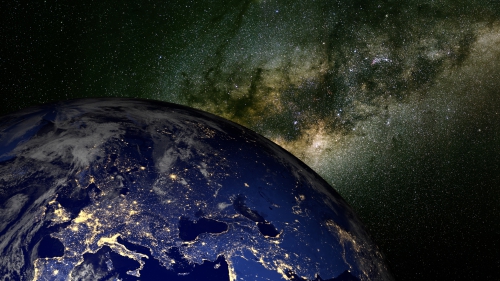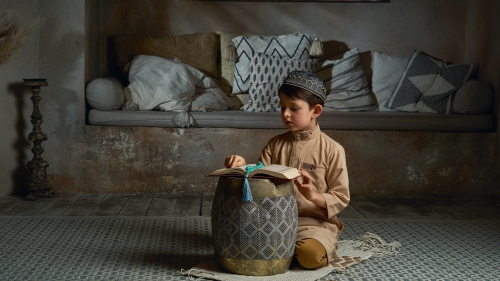Why Are Muslim Youth Confused?

Youth and Progress: Two Sides of The Coin
It is undeniable that a great many Muslim youth are disoriented and confused - some more than others - and the situation is getting worse by the day. Some cases yet morph into apostasy, either in relation to outward Islamic practice or its fundamental articles of faith.
The phenomenon is so subtle that a person may not even be aware of what is happening and that he has been affected by the disease. The condition may be dubbed a “silent killer”, in that it develops slowly and its signs and symptoms are often ignored or misunderstood.
This is unfortunate because Muslim youth signify the hope and future of Islam and Muslims. They are the actual wealth to be cherished and cultivated most. It would be suicidal to disregard and fail to accommodate their intrinsic aspirations and needs.
The destiny of communities lies in the hands of their youth. Those communities which fail to realize this lack orientation, purpose and vision, and are soon ruined. Their youth then become their biggest liability and burden.
The entrenched inept structures and systems in such communities fear their youth most and their inherent vibrancy, enthusiasm, and passion. Thus, instead of being nurtured, optimized, and universally benefited from, they are often exploited and manipulated. From the very beginning, youth are subjected to rigid socio-political and educational systems which aim to produce blindly loyal, albeit credulous and gullible, servants.
Youth that critically think, question, and put forth alternative organizational or procedural models, do not represent a desired outcome of the said systems.
Conversely, those communities which recognize that youth should be the building blocks of every constructive initiative and program, and that they should occupy the central place and play the pivotal role in the nation-building processes, are more visionary, dynamic, and progressive. They offer more to the world than the advocates of the former model.
Indeed, the relationship between the advancement of a community in all fields and the brilliance, as well as power, of its youth is causal, the latter always being the cause and the former the effect.
It is on account of this, that among the foundational goals of maqasid al-shari’ah is the preservation of lineage or future generations (hifz al-nasl). Closely related is also the preservation of religiosity or faith (hifz al-din), of intellect (hifz al-‘aql), of life (hifz al-nafs) and of property or wealth (hifz al-mal). As the torch-bearers for their communities’ sustainable well being and future, the overall interests of youth, more than any other social category, are entailed in the notion of maqasid al-shari’ah.
A society that strives to make accessible and affordable all types of good, such as proper education, employment, and means together with facilities for moral and spiritual development, honors its youths and is an excellent society. Whereas a society that impedes or complicates access to good, but widely opens and facilitates access to all types of evil, such as intoxicants, drugs, prostitution, pornography, corrupt entertainment, deficient education, and economic systems, dishonors its youth. Such is a wretched society.
The main causes of Muslim youth’s confusion today are as follows:
Improper Education
It is almost impossible to find in the Muslim world an educational system that is at once comprehensive and integrative, in the sense that it combines and strives for excellence in all fields of knowledge. No system adequately covers the total physical, intellectual, moral, and spiritual development of Muslim youth. The approaches are always imbalanced, some segments of education, as well as life, being treated at the expense of the others. There is a never-ending tug-of-war for supremacy between different educational philosophies, standards, and their stakeholders.
The processes are interchangeably branded as secularized, de-spiritualized, radicalized, dichotomous, traditionalized, modernized, etc. In the context of Malaysia, for example, Dr. Rosnani Hashim wrote about educational dualism whereby two mutually-independent systems upholding mutually exclusive and possibly contradictory educational philosophies operate simultaneously. Like most Muslim countries, Malaysia, too, grapples with this dual system of education.
The biggest victim in the whole process, undeniably, is Muslim youth. They are torn between their treasured Islamic beliefs, traditions and values, and such as were imposed on them by means of education, with many not only contradicting, but also challenging the former.
Much of education in the Muslim world is based on, and is permeated with, foreign worldviews and values. Hence, Muslim young students find themselves repeatedly in a lose-lose situation. Their original religious education – regardless of its amount and intensity – and their built-in Muslim identity are not quite compatible with what is served to them in the name of education and progress. Their young, fragile, and innocent minds and souls are no match for what is constantly hurled at them.
Since the two perspectives are irreconcilable and, at the same time, neither could be disposed of, Muslim students have no choice but to try to do the impossible and imbibe both the options. However, such spells a disaster. It facilitates in ethical and spiritual terms what is called in psychology “multiple personality disorder” or “dissociative identity disorder” (a condition that is characterized by the presence of at least two clear personality/self-states, called alters, which may have different reactions, emotions, and body functioning) (www.medicinenet.com/dissociative_identity_disorder/article.htm).
That denotes both a twin and embryonic manifestations of hypocrisy as well.
No wonder then that many Muslim youth are easy prey for the luring advances of such worldviews and ideologies as liberalism, secularism, materialism, modernism, and post-modernism, where - on the whole - metaphysical realities and laws are discarded, the role of the revealed knowledge discredited, objective truths and high moral standards dispensed with, and freedom of, and from, religion aggressively propagated.
Only this can explain, for example, why numerous Muslims worship Almighty Allah in mosques, but idolize and exalt something else in the spheres of work, business, politics, art, architecture, education, entertainment, and culture. It also explains why a great many Muslims build mosques, religious schools and other devout establishments, but, at the same time, build as many, if not more, “temples” of materialism, consumerism, secularism, modernism, and post-modernism in the forms of commercial, entertainment, media, sports, political, and cultural institutions and bodies.
In the arena of education, Muslim youth are intended to end up extolling others and other people’s histories, traditions, cultures and civilizations, and to get alienated as much as possible form their own. The systems and personnel are carefully enacted and employed from within and without for the projected goals.
Knowledge as power (scientia potentia est), education as the fundamental precondition for political development, empowerment, democracy and social justice, and education as the most powerful weapon which can be used to change the world, had to be divested from Muslims’ domain. Through knowledge and education, Muslims are not to liberate and enlighten themselves, but to enhance their subjugation and servitude to others.
Wrong Methods for Teaching Islam
It must be borne in mind that knowledge is one thing, and the methods of its delivery completely another. Neither can be accomplished without the other.
When it comes to teaching Muslim youth about Islam, formally or informally, the above precept ought to be most meticulously observed.
We live today in the Information Age (Computer Age, Digital Age or New Media Age) where information and knowledge have become commodities that are easily available and are quickly and widely disseminated. We also live in the age of globalization which is dominated by systems of global or borderless interaction, integration, competition, and connectivity. A whole world of knowledge and information is available at one’s fingertips.
That means that Muslim youth enjoy easy access to everything pertaining to the knowledge, values, culture, and civilization of Islam. They do so either through the world of computers and internet, which are available at home, in schools, mosques and malls, or through their smartphones, which have become inseparable features of their lives.
The emerging fascinating spectacles made the young minds more curious, inquisitive, enthused, and selective, than ever before. They feel inclined to question and rationalize basically everything. And why not, when they have the luxury of accessing and scrutinizing basically everything.
That is why in today’s world, especially within the domains of epistemology, there is increasingly less place and opportunity for myths, legends, folklores and fibs. This in turn gave rise to unrestrained agnosticism, skepticism, and freethinking that swept across each and every segment of life and society. In the process, religions – including Islam - suffered most, in that it takes more than the modes and bounds of empiricism and rationalism to authenticate their otherworldly dimensions.
Thus, the question is not as much about Islamic knowledge per se as about rendering it sensible and attractive to Muslim youth, along with applying appropriate and effective methods.
Gone are the days when sheer memorization of religious texts, albeit without comprehending, let alone acting upon, them, was tolerable; when an educator alone possessed a source of knowledge in the form of an old and worn-out book which he would read and superficially interpret to his audiences with little, or no, questions asked; when sensitive and tricky issues were successfully circumnavigated and swept under the carpet; when blind following and ritualism could be promoted as praiseworthy acts; when the authority of educators, no matter what they said and did, was total and indisputable; when people – especially youth in their formative years – were hardly exposed to different ideas and systems of living; and lastly, when condemnations of and out-and-out attacks against Islam were yet to become an issue of global proportions.
This means that teaching today’s Muslim youth on the basis of irrational and shallow arguments, weak and rejected hadiths (traditions) of the Prophet (peace be upon him), widespread baseless anecdotes and mere speculations, etc., will never appeal to them and will generate more damage than benefit.
In such situations, skepticism and freethinking readily appear more attractive and promising a proposition. Even if someone fails thus, it should be fine for him because he did so on account of his own choice and doing, rather than somebody else’s.
By the way, it is grossly inappropriate to invite anybody - not only youth - to the absolute truth, the infinite love and pleasure of Almighty Allah and His Paradise (Jannah) the width whereof is as the width of the heaven and the earth, by means of fear, intimidation, incapacity, and half-truths. The whole enterprise may quickly wither and completely backfire. It goes without saying that the spirit of methods of da’wah should correspond to the spirit of that which people are invited to.
For instance, it will never entirely appeal to today’s Muslim youth, nor make full sense, if they were told that they are supposed to believe, cover their awrah and dress appropriately, pray five times a day, fast the holy month of Ramadan, read regularly the Holy Qur’an, avoid ikhtilat (free mixing between men and women), shun certain ubiquitous brands of music and entertainment, etc., only because Almighty Allah insists and will be angry; because they will be severely punished if they refused to comply; because they must and they have no other choice; and because those denote Islamic traditional canons, rules and rituals which, as Muslims, they are expected to adopt and follow, just as their predecessors did.
Even though all of the above justifications are correct, yet threats, pressures, myopia and solely relying on dos and don’ts will not do the trick. A great deal of wisdom, reasoning, benevolence, practicality, role modelling and “speaking the language” of youth will certainly do. Youth are more responsive to discourses grounded in humanity, love, logic, open-mindedness, moderation and altruism.
Youth certainly would not mind religious strictness where it is due, but would also expect flexibility and frankness where they are due. In both spheres, however, excessiveness, dogmatism, and narrow-mindedness should never be welcome.
Youth should be shown that Islam as the only truth was meant for them, as much as for anybody else, and they were meant for it. Islam as a natural, pragmatic, and logical religion and way of life is easily compatible with every natural, pragmatic, and logical need and urge of theirs. What is more, Islam painstakingly cultivates and preserves them. Surely, in - and to - Islam, youth is exceptional.
Furthermore, Islam should be presented to youth as the living truth. It should be proven at all levels that it contains answers and solutions for all predicaments of mankind – including those affecting youth.
As the ultimate truth, Islam should operate above the constrictions of space and time and their endless vicissitudes. Islam makes no distinction between races, genders, different age categories, and geographical as well as historical points. Its only benchmark is piety, while freedom, justice, comprehensive excellence, compassion and unity constitute its unmistaken traits. In actual fact, Islam’s recognizable identity and trademark can easily be related to the prevalent ideals and ambitions of all youth in all ages.
Against this verity and its ontological backdrop, in no way can the prospects of agnosticism, skepticism, and freethinking stand their ground.
It follows that the problem is neither about the substance of Islam, nor the inborn disposition of Muslim youth. The problem revolves around bridging the gap between the two sides, communicating, strategizing and finding most effective methods of delivery.
Surely, for Muslim youth Islam is the only way. It alone can furnish them with self-confidence, a sense of direction and contentment. Everything else is a form of temporary reprieve, or an outright sham.
Lack of True Role Models
John Wooden (d. 2010), an American basketball player and head coach, once said that young people need models, not critics. Like all youth, Muslim youth, too, need excellent role models to inspire, motivate and guide them. In the contemporary contexts, nevertheless, they are lacking.
It is true that the best role model to all Muslims is their Prophet Muhammad (peace be upon him), followed by his honorable family, the companions and all those who followed in their footsteps.
However, being what they are and perceiving things as they do, youth, in addition, need those individuals who, while fully emulating the Prophet (peace be upon him), established themselves as provisional exemplars. That could be the case in any aspect of youth’s or adults’ life affairs.
Muslim youth need to look up to such persons and witness their model legacies. They need to directly see and meet them, and thus, easily identify themselves and their struggles with them. They need inspirations and motivations that are products of their own time. In more perceptible and real-world terms, they need to learn the characteristics of great and successful persons and to learn how to cope with recurring adversities.
Through them, Muslim youth could relate to the role model of all role models: the Prophet (peace be upon him), his honorable family and the companions. With the ideological gap bridged, the chronological gap between youth and their Prophet (peace be upon him) will pose no obstacle either.
However, what Muslim youth have at their disposal, firstly, are unsuitable or plainly erroneous role models, coming from all walks of life. They represent different cultures and traditions, and following them would mean, first and foremost, adopting the worldviews and value systems that they epitomize. It would in the end also mean the abandoning of one’s own cultural and religious identities.
Another option that Muslim youth have is Muslim corrupt and arrogant political and business leaders, on the one hand, and unwise, egotistical, and puffed up scientists, artists and the leaders of what could be described as a Muslim pop culture, on the other.
There are of course many exceptions, but they constitute a minority and the situation remains as good as it gets. The case of Muslim problematic role models, owing to their influential positions, is akin to one of not only being in the wrong and misguided, but also misguiding and plunging others into error.
As regards the scholars (‘ulama), the guardians of society, their status and position are often maneuvered, so as not to conflict with the standing and function of the first type of “role models”.
The prominence and appeal of many true scholars and their potential influence are systematically downgraded, besides being painstakingly controlled. If some of them posed a threat, however, they by diverse means and strategies would be neutralized and, in some cases, eliminated altogether. Their reputations and legacies are then methodically tarnished.
In their stead, mostly pseudo scholars and those who lack spiritual and intellectual integrity - but proved obedient and co-operative - are employed to be the face of the religious and traditional intellectual reality. The void is further filled by outright incompetent – though perhaps sincere and willing – and self-styled scholars who, when all is said and done, may create more damage than benefit.
In the midst of all these developments stand Muslim youth who are desperate for inspiration, motivation, and guidance, and who only want to live productive and honorable lives. But what they witness is good presented as evil, and evil as good. They see knowledge served in the most attractive wraps as ignorance, and ignorance as knowledge. The same holds true as regards the dialectics of light versus darkness, modernity versus primitiveness, progress versus backwardness, and happiness and joy versus despondency and sorrow.
To some, therefore, the only solutions are either to reside in particular historical episodes, overly romanticizing it and its protagonists, or to build castles in the air and live in their own fantasies with imaginary characters.
Accordingly, one can imagine what a Malaysian honest and religious Muslim youth felt when he attended the anti-ICERD (International Convention on the Elimination of All Forms of Racial Discrimination) rally on 8 December 2018 in Kuala Lumpur. He came to attend a respectable event, which was triggered, partly, by the fact that the essential dominance of the Malays (Muslims) in various life fields has been consistently shrinking, and that their culture, religion (Islam) and race have been increasingly disparaged and affronted by the growing number of liberals, seculars, and agnostics in the country. He must have felt proud and excited to make a contribution.
However, he also saw as part of the rally former Prime Minister, Datuk Seri Najib Tun Razak, and some other prominent figures from the ousted government. They were the persons fairly responsible for bringing the country virtually to its knees because of countless malpractices of theirs. As a result, many are waiting for trial and, possibly, to be jailed, particularly Najib. And there they were participating in the march, and cheered by thousands of supporters and sympathizers.
The youth must have wondered who actually was supporting what, for what reasons, against whom, and how sincere some participants and VIPs were. He likewise must have grappled with the quandary of which aspects of the rally he genuinely supported and which ones he did not. If his excitement continued somehow throughout the event, the overall feeling must have morphed into that of a disappointment and anti-climax. He might have left the protest with more questions in his head and heart than answers.
Institutional Ideological Dichotomy
Nowadays when everything is institutionalized, it is absolutely vital that there exists the highest degree of ideological harmony between diverse institutions. That means that all institutions, irrespective of their character and scope, work together and in unison complement each other in realizing an aggregate success.
Institutions’ visions and missions cannot radically differ. The unity of supreme visions, purposes and aims is overriding.
That, however, is not the case in most Muslim countries. Various institutions work for their own objectives and in their own ways. They are furthermore at odds with one another, both ideologically and operationally. Instead of making great strides together, they move away from the core towards separate directions, alienating themselves more and more from the core - and from each other - stretching the core to its limit.
That core is the Islamic tawhidic (Allah’s Oneness) life paradigm and its incalculable implications for life and thought, as well as the Muslim personality which in its deeds, words and thoughts is expected to embody the former.
This means that all institutions in a Muslim context ought to strive via their given powers and compasses for the implementation of Islam as a complete code of life. Each institution is to contribute its share for the unified purpose, creating eventually a colorful mosaic of ideas, approaches, responsibilities and standpoints, which will be closely knitted with the thread of the Islamic monotheistic message. That will be a sign of institutions’ appropriateness and relevance, whereas the opposite will connote their impropriety and insignificance.
Since Muslims stand at the center of this paradigm as its target, they will be the first to reap its benefits when it is apt and functions well. Similarly, they will be the first to suffer when it breaks down and starts malfunctioning.
Indeed, the spiritual, moral and intellectual development of Muslim youth is most affected by the institutional ideological dichotomy.
Muslim youth are primarily targeted by all institutions. They keep competing in attracting them to their respective trajectories, promising all the best that youth might need or desire. By virtue of youth being the future and backbone of society, all societal institutions and establishments are bent on securing their own future with and through youth.
For Muslim youth, however, their institutions create nothing but a crossroads. Youth stand at its center pulled towards opposite paths. They do not really know where to go and to which set of values to subscribe and from which to unsubscribe. They lack a criterion to do so. Confused, they are left to themselves, with their youthful, vacillating and vulnerable minds and souls in charge.
The Qur’an emphatically affirms about itself that it is the Criterion - not merely a criterion. Only with it can good be distinguished from evil, and light separated from darkness. But the Qur’an has been abandoned long ago in many circles, so it is failing to perform its tasks. Muslim youth are thus left to the tender mercies of the strong currents of the opposing systems and ideologies that compete for their inherent aptitudes and talents.
For example, Muslim youth are taught and trained something at home and in mosques, but something else in schools and elsewhere. They are asked at home and in mosques to subscribe to a certain worldview and follow certain values, but the same worldview and values are ignored, yet every so often openly criticized and derided, through the media and entertainment industries. What behavioral standards and patterns in life Muslim youth are requested at home and in mosques to follow, are in stark contrast with the behavioral standards and patterns of politicians, business leaders, educators, media personnel and artists.
Painfully torn between different voices, authorities and influences, Muslim youth are perennially unsure whom to trust and follow most enthusiastically, given that neither following nor reconciling between them is possible: parents, religious leaders, scholars, politicians, artists, etc.
Unquestionably, this is a sophisticated and well-evolved form of legitimization, along with spreading, of the narrowing down of the scope of Islam’s comprehension and implementation, on the one hand, and of individual pretense and two-facedness, on the other. That further fosters some of the most harmful ethical and spiritual ailments, such as deadening formalism, superficiality, literal symbolism and lethargy in relation to faith and worship.
Not only Muslim youth, but also Muslims at large, suffer greatly from those ailments. In this case, confusion mutates into concrete systems of thought and action.
Being at the receiving end of this occurrence is truly an excruciating experience. Even the Holy Qur’an through a parable hints at it and the severity of its repercussions. It says: “Allah cites you a parable - there is a slave man who is shared by many masters, each pulling this man to himself (like the man who worships other deities along with Allah), and there is another slave man who entirely belongs to one master (like the man who worships Allah Alone) - are the two alike in comparison? Praise be to Allah! But most of them do not know” (al-Zumar, 39:29).
The servant owned by several quarrelsome masters (authorities and powers) - all of them at variance with one another - will always be confused because his masters will always disagree and give him differing instructions. In order to outdo each other, they will manipulate and work against one another. Each one will stop at nothing with the aim of securing supremacy and control over the servant.
The poor servant of many masters has to suffer from the quarrel of his many masters. It is an impossible and unnatural position. He will never experience peace either between them or for himself.
In contrast, the other servant serves only one master. His master is good, and does all he can for his servant. The servant can concentrate his attention on his service. He is happy himself and his service is efficiently performed. “Can there be any doubt as to (1) which of them is the happier? and (2) which of them is in a more natural position? No man can serve two, still less numerous, masters” (Yusuf Ali).
Topics: Digital Life, Muslim Youth, Tawhid (Oneness Of God) Values: Education, Knowledge
Views: 6977
Related Suggestions









